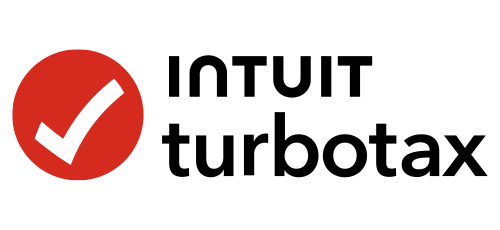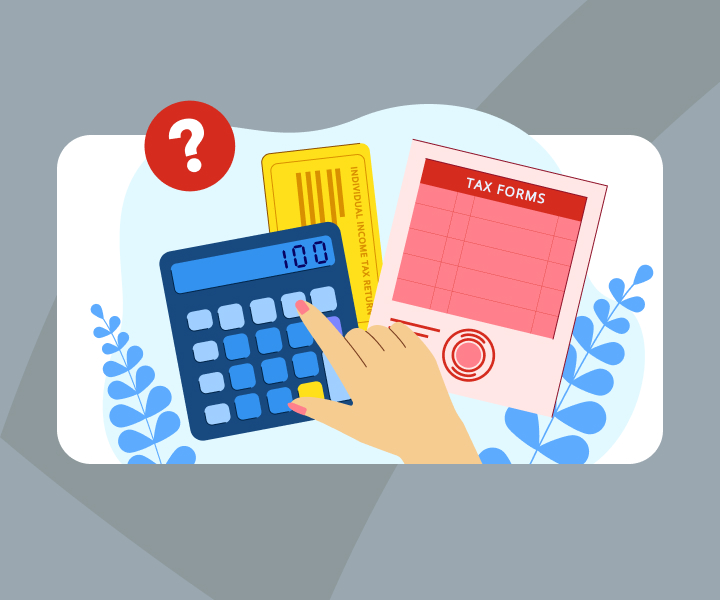Salary or Dividends: What’s the Best Way for Business Owners to Pay Themselves?
TurboTax Canada
May 22, 2025 | 7 Min Read
Updated for tax year 2024


A new way to file your business taxes is coming soon!
TurboTax Business | Assisted
You’ve worked hard to build and grow your business, and now you’re ready to reward yourself. But taking money out of your business isn’t just about cutting yourself a paycheque. It’s a strategic decision that can affect your taxes, retirement savings, and even your ability to get a mortgage.
Whether you should choose to pay yourself a salary, dividends, or a mix of both is one of the most common (and confusing) questions Canadian business owners face. The right choice depends on your financial goals, lifestyle, and how well your business is doing.
In this guide, we’ll break down the difference between salary and dividends in simple terms, explain how each one is taxed, and help you figure out which approach works best for you.
Key Takeaways
- Paying yourself a salary builds Registered Retirement Savings Plan (RRSP) room and boosts mortgage eligibility but comes with more admin and higher Canada Pension Plan (CPP) costs.
- Dividends are simpler and can be more tax-efficient but don’t create RRSP room or count as earned income.
- Many business owners use a blend of compensation: salary for stability and dividends for tax savings.
What is a salary and how is it taxed?
Paying yourself a salary is similar to how you’d earn income as an employee. Your business pays you a certain amount, minus taxes, Employment Insurance (EI), and Canada Pension Plan (CPP) contributions, and sends the government your payroll remittances. At the end of the year, you get a T4 slip—just like you would from any employer.
One of the biggest advantages of a salary is that it builds your Registered Retirement Savings Plan (RRSP) contribution room, helping you save for retirement. It also makes it easier to qualify for personal loans or mortgages because lenders like to see consistent employment income on paper.
That said, salaries also come with more administrative work. You’ll need to set up a payroll account with the Canada Revenue Agency (CRA), make monthly payments to cover deductions, and file paperwork every year. Plus, since you’re both the employer and employee, you’ll pay double into the CPP—which adds up over time.
What are dividends and how are they taxed?
Dividends are another way to take money out of your business, but they work very differently. Instead of treating you like an employee, your business pays you as a shareholder, distributing profits left over after the company has paid its taxes.
Dividends don’t generate RRSP room, and you don’t pay CPP contributions on them. But the upside is they’re simpler to administer: no payroll accounts, no remittances, and no regular deductions.
From a tax perspective, dividends can be more efficient depending on how much money your corporation makes and how your personal finances are set up. Thanks to the federal Dividend Tax Credit (DTC), you might end up paying less tax overall when compared to a salary—especially if your business income is high and your personal income is modest.
However, dividends aren’t considered earned income, which means you could miss out on certain government benefits. It could also make getting a mortgage a little trickier, since banks often prefer employment income when reviewing applications.
How to pay yourself with your own company dividends
Taking dividends from your corporation might seem straightforward. But there are some important requirements involved in paying yourself this way that the Canadian business tax experts at TurboTax Business Assisted can help you with to stay compliant with CRA regulations.
- Start with your retained earnings: Before you can pay dividends, your corporation needs to have enough retained earnings—that’s the profit left over after your business has paid all its expenses and corporate taxes. Dividends can only be issued from these after-tax profits. So if your corporation isn’t turning a profit, dividends aren’t on the table.
- Draft a board resolution: Legally, dividends must be declared by the board of directors—even if you’re the only person on the board. That means putting together a formal resolution stating how much is being paid out, to whom, and on what date. This helps document the transaction and ensures your corporate records are up to date.
- Report the dividend income: Once the dividend is paid, your corporation needs to issue a T5 slip to each shareholder who received a dividend. This slip is used to report the income on your personal tax return. You’ll also need to file a T5 summary with the CRA. While there’s no tax withheld at the source like with a salary, you will need to pay personal tax on the dividend amount. So it’s wise to plan ahead for what you’ll owe, which may or may not be paid out in instalments.
Comparing salary vs. dividends
Here are a few things to think about when making your decision on whether to pay yourself a salary or dividends.
- If you’re just getting started, or if you’re focused on building your retirement savings, a salary might make more sense. It gives you RRSP room and CPP contributions can add up to a decent pension if you’re in it for the long haul. However, owners closer to retirement might prefer to take dividends to lower their current tax burden.
- If you’re looking for a simpler option, and would rather skip the monthly payroll headaches, dividends might be the way to go.
- Want to buy a house soon? A salary will likely make you more mortgage-ready in the eyes of lenders.
- If your corporation is doing really well and has money to spare, dividends could be a smart way to access those profits with less tax—especially when combined with the right tax planning.
Many business owners choose a combination of both—taking enough salary to build RRSP room and qualify for loans, and topping it off with dividends to reduce their overall tax burden. It’s all about balance.
Here’s a scannable chart for an at-a-glance perspective:
| Consideration | Salary | Dividends |
| RRSP contribution room | Builds RRSP room | Does not build RRSP room |
| CPP contributions | Required; helps build future pension | Not required; no CPP benefits |
| Tax complexity | Requires payroll setup, remittances | Simpler to administer—no payroll needed |
| Mortgage qualification | Favoured by lenders; more reliable income proof | May be less appealing to lenders |
| Tax efficiency | Higher taxes up front, but can offset with deductions | Potentially lower tax rate with planning |
| Retirement planning | Better for building long-term retirement funds | May appeal to those already near or in retirement |
| Cash-flow needs | Regular, predictable income | Flexible; can be paid when funds are available |
| Best suited for | New business owners, retirement savers, those seeking loans/mortgages | Established businesses or owners seeking tax simplicity or cash extraction |
How to pull money out of your corporation to pay yourself
If you go with a salary, you’ll need to:
- Set up a payroll account with the CRA
- Calculate and withhold taxes, EI, and CPP from your payments
- Remit them monthly
- Issue yourself a T4 slip at the end of the year
- File your annual T4 summary
If you go with dividends, you don’t need to deal with payroll at all. Instead, your corporation issues a dividend resolution, pays out the amount you’ve declared, and gives you a T5 slip at tax time. Just make sure you’ve set aside enough to cover any personal tax you’ll owe later. That’s what accountants call avoiding the “dividend trap.” This refers to taking out dividends without properly planning for the tax bill, leaving you short when it comes time to pay.
Whichever route you choose, it’s smart to think ahead—especially before your fiscal year ends. TurboTax Business and our small business tax experts can help you determine the strategy that best fits your life; after all, avoiding surprises at tax time is always a win.
Other tax efficient ways to withdraw money from your company
While salary and dividends are the most common ways to pay yourself, they’re not the only options on the table. If you’re looking to optimize how you take money out of your corporation, here are several other strategies that can help you do so with minimal tax consequences.
- Repaying shareholder loans: If you’ve ever loaned money to your corporation—for example, to cover startup costs or tide the business over during a slow season—you’re allowed to repay yourself that money completely tax-free. This isn’t income, so it doesn’t get taxed personally. It’s simply your business returning what it owes you. Just make sure everything is properly documented, with a clear loan agreement or shareholder ledger that supports the transaction in case the CRA asks.
- Capital dividends: If your corporation sells an investment or asset for a profit, half of that capital gain is tax-free. That portion can be paid out to shareholders as a capital dividend, which is completely tax-free in your hands. It does require special filings with the CRA and careful tracking in your corporation’s Capital Dividend Account (CDA). But when the opportunity arises, it’s a smart way to get tax-free money out.
- Reimbursing business expenses: If you’ve personally paid for business expenses, such as travel or client meals, you can have your corporation reimburse you. As long as the expenses are legitimate and properly documented, this is another non-taxable way to move funds from the corporation to your personal account. Keeping good records (receipts, logs, etc.) is key to staying compliant and audit-proof.
- Individual Pension Plans (IPP) and Retirement Compensation Arrangements (RCA): These are more advanced retirement planning tools, but they can be powerful for high-income business owners who are looking for tax-sheltered ways to build wealth. An IPP, for instance, is a defined benefit pension plan that allows your corporation to make large, tax-deductible contributions on your behalf—often more than you’d be allowed to put into an RRSP. Similarly, an CRA allows you to defer a portion of your compensation into a retirement plan with some unique tax advantages. Both require some setup and ongoing costs, but they can be worthwhile if you’re focused on long-term planning.
Tax planning considerations
When it comes to paying yourself from your corporation, timing and documentation can make a big difference—not just for compliance, but for how much tax you’ll ultimately pay.
- Timing matters: Strategic planning before your fiscal year-end can help you make the most of your compensation. For example, you might decide to take more salary this year to boost your RRSP contribution room, or more dividends next year when your personal income is lower. These choices can significantly affect your total tax bill.
- Documentation is crucial: Each method of compensation comes with its own administrative requirements; dividends require board resolutions and proper bookkeeping, while salaries require CRA payroll registration and T4 slips. Good record keeping is essential, as the CRA will expect a clear paper trail.
- Consider income splitting, with caution: If you have a spouse or adult children involved in the business, income splitting can be a powerful way to reduce your household’s overall tax burden. However, this strategy has to follow the CRA’s Tax on Split Income (TOSI) rules, which are designed to prevent unfair income shifting. TOSI rules limit your ability to pay dividends to family members unless they are actively involved in the business or meet specific age and ownership conditions.
You run the business, we handle the taxes
Whether you choose to pay yourself a salary, dividends, or a combination of both, it’s essential to make the decision based on your personal financial goals and tax situation. TurboTax Business can help you decide the best possible option for you.
Use TurboTax Business, a CRA-certified tax software, to file your returns with confidence. With our small business tax experts, we'll help you uncover every credit and deduction for your business and conduct a final review to ensure you're compliant with CRA regulations.
What is a salary and how is it taxed?
What are dividends and how are they taxed?
Comparing salary vs. dividends
How to pull money out of your corporation to pay yourself
Other tax efficient ways to withdraw money from your company
You run the business, we handle the taxes
Filing your T2 corporate returns doesn’t have to be complicated.
Related articles

© 1997-2024 Intuit, Inc. All rights reserved. Intuit, QuickBooks, QB, TurboTax, Profile, and Mint are registered trademarks of Intuit Inc. Terms and conditions, features, support, pricing, and service options subject to change without notice.
Copyright © Intuit Canada ULC, 2024. All rights reserved.
The views expressed on this site are intended to provide generalized financial information designed to educate a broad segment of the public; it does not give personalized tax, investment, legal, or other business and professional advice. Before taking any action, you should always seek the assistance of a professional who knows your particular situation for advice on taxes, your investments, the law, or any other business and professional matters that affect you and/or your business.









